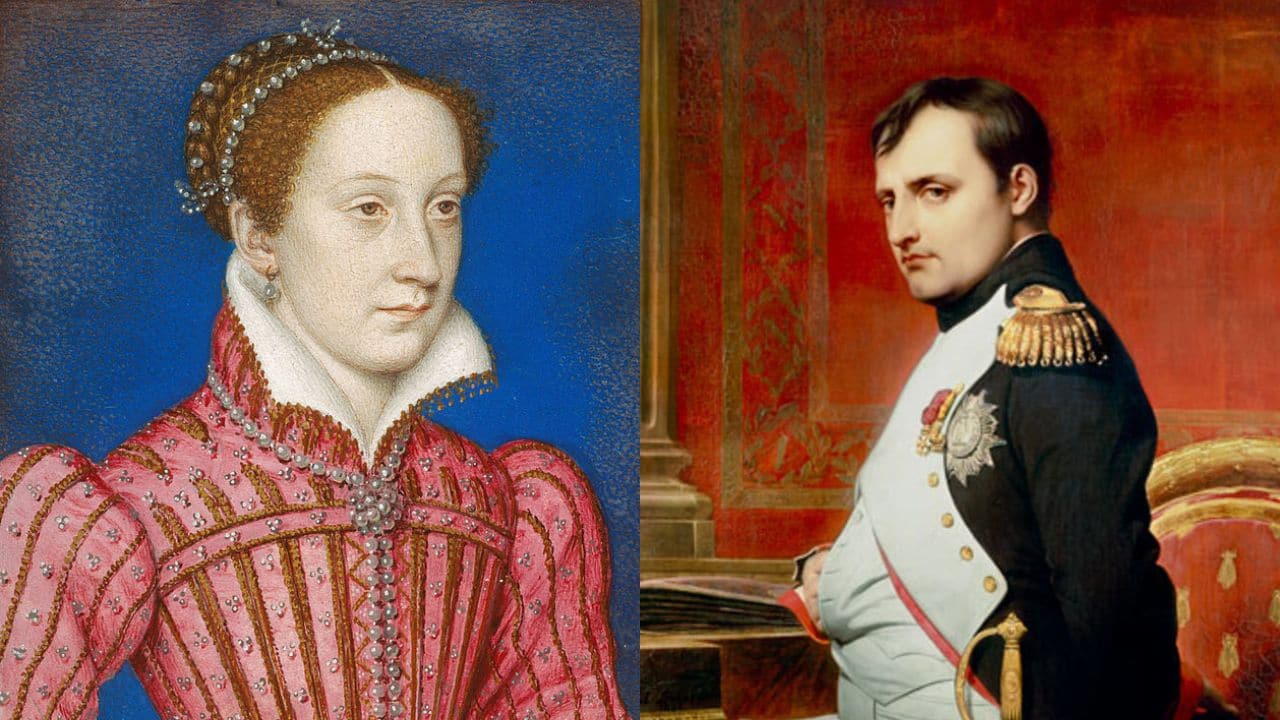The Haunting Death Masks of 18 Famous People in History
Our attitudes toward death have evolved significantly over time. In the past, it was customary to photograph the deceased or even display them for viewing, either at home on a kitchen table or in funeral parlors. While these practices might unsettle us today, they reflect historical norms.
Similarly, death masks, though they might appear eerie now, served as a means to capture the likeness of individuals before the advent of photography. These masks are tangible representations of a person's achievements and lasting impact on humanity.
1. Ludwig van Beethoven (1770-1827)

Beethoven's innovative use of musical form and emotional intensity expanded the boundaries of classical music. He is remembered for his revolutionary compositions, including symphonies, concertos, and sonatas that continue to resonate with audiences worldwide.
2. Abraham Lincoln (1809-1865)

The 16th President of the United States was one of the most well-known figures in American history. He led the nation through the tumultuous period of the American Civil War and issued the Emancipation Proclamation. Lincoln's steadfast leadership, eloquence, and commitment to preserving the Union and abolishing slavery have solidified his legacy as one of America's most outstanding leaders.
3. Napoleon Bonaparte (1769-1821)

Despite his defeat at Waterloo, the French general was regarded as a great military leader. He also declared himself emperor of France from 1804 to 1814. The United States may also be pleased with his decision to sell the French-owned Louisiana to North America in 1803.
4. Sir Isaac Newton (1643-1727)

A pivotal figure in the scientific revolution, Newton is best known for his groundbreaking work in mathematics, physics, and astronomy, which was essential to our understanding of the world. His laws of motion and universal gravitation fundamentally transformed our understanding of the natural world.
5. Oliver Cromwell (1599-1658)

A controversial figure in English history, Cromwell was a military and political leader during the English Civil War, leading to the execution of King Charles I and the establishment of the Commonwealth of England. He was regarded by many as brutal and inhuman for his treatment of the Irish.
6. William Shakespeare (1564-1616)

While this mask certainly looks like an image of the famous English writer, scholars are still determining if it is him. The debate on this topic is still divided. Shakespeare's influence on literature and drama remains unparalleled, with his plays and sonnets transcending time and culture.
7. Dante Alighieri (1265-1321)

The Italian poet was best known for his work, The Divine Comedy. Dante's depiction of the journey through the Netherworld, Purgatory, and Heaven profoundly impacted Western literature and theology. His vivid allegorical narrative is a timeless exploration of morality, redemption, and the human condition, inspiring countless interpretations and adaptations across centuries.
8. Martin Luther (1483-1546)

Luther was the Protestant Reformation's key figure. His theological writings and challenges to the Roman Catholic Church's practices and his translation of the Bible into German empowered individuals to engage directly with scripture, catalyzing religious reformations and shaping Protestant denominations worldwide.
9. Mary Queen of Scots (1542-1587)

The Scottish queen had a tumultuous reign that was marred by political intrigues and religious instability. She was eventually executed, highlighting the complexities of 16th-century European politics. Mary's alliances, conflicts, and dynastic ambitions intertwined with the struggles of her era contribute to her enduring fascination as a figure of historical intrigue and tragedy.
10. Ned Kelly (1854-1880)

An iconic figure in Australian history, Ned Kelly left a complex legacy as a notorious outlaw and a symbol of resistance against British colonial authority. Born in Victoria, Australia, Kelly became the subject of folklore due to his confrontations with law enforcement, culminating in his capture and subsequent execution.
11. Robert E. Lee (1807-1870)

Robert E. Lee left a difficult legacy as the Confederate general who led the Confederate Army of Northern Virginia during the American Civil War. Revered for his military prowess and leadership, Lee's decision to fight for the Confederacy continues to evoke debates about states' rights, slavery, and national identity.
12. Franz Liszt (1811-1886)

Franz Liszt encapsulates the virtuosity and innovation of a seminal figure in 19th-century classical music. Celebrated for his groundbreaking piano compositions and contributions to the Romantic era, Liszt's influence extended beyond his native Hungary to redefine concert practices and piano technique.
13. James Joyce (1882-1941)

The Irish author James Joyce was an innovative literary genius whose works, including Ulysses, Dubliners, and A Portrait of the Artist as a Young Man, revolutionized 20th-century literature. Celebrated for his experimental narrative techniques, linguistic innovation, and intricate thematic explorations, Joyce's influence extends across modernist literature.
14. Leo Tolstoy (1828-1910)

Known for monumental works like War and Peace and Anna Karenina, Tolstoy delved deep into themes of morality, spirituality, and social justice, influencing generations with his penetrating critiques of Russian society and human nature. His death mask is a tangible artifact reflecting his legacy in Russian and global literature.
15. Lorenzo de Medici (1449-1492)

Known as “Lorenzo the Magnificent,” Lorenzo de Medici was an Italian statesman and de facto ruler of the Florentine Republic during the height of the Renaissance. His patronage of arts and letters fostered a flourishing cultural and intellectual environment, nurturing talents like Leonardo da Vinci, Michelangelo, and Botticelli.
16. Johann Strauss II (1825-1899)

Austrian composer Johann Strauss II, known as the “Waltz King,” continues to enchant audiences worldwide with his melodies. Renowned for iconic compositions such as The Blue Danube and Tales from the Vienna Woods, Strauss elevated the waltz to new heights, defining the elegance and vitality of 19th-century Viennese society.
17. Ulysses S. Grant (1822-1885)

Ulysses S. Grant, the 18th President of the United States, played a decisive role in preserving the Union during the American Civil War. Leading Union forces to victory and later serving two terms as President, Grant's legacy is characterized by his military acumen, commitment to civil rights, and efforts to reconcile a divided nation.
18. L'Inconnue de la Seine (Late 1880s)

While this death mask is not of a well-known person, it has become famous in its own right. Legend has it that the mask was cast from the face of an unidentified young woman whose body was found in the Seine River in the 19th century.
While the true identity and story of L'Inconnue remain shrouded in mystery, her death mask continues to captivate and inspire, transcending its origins to become a symbol of universal themes and human curiosity.

